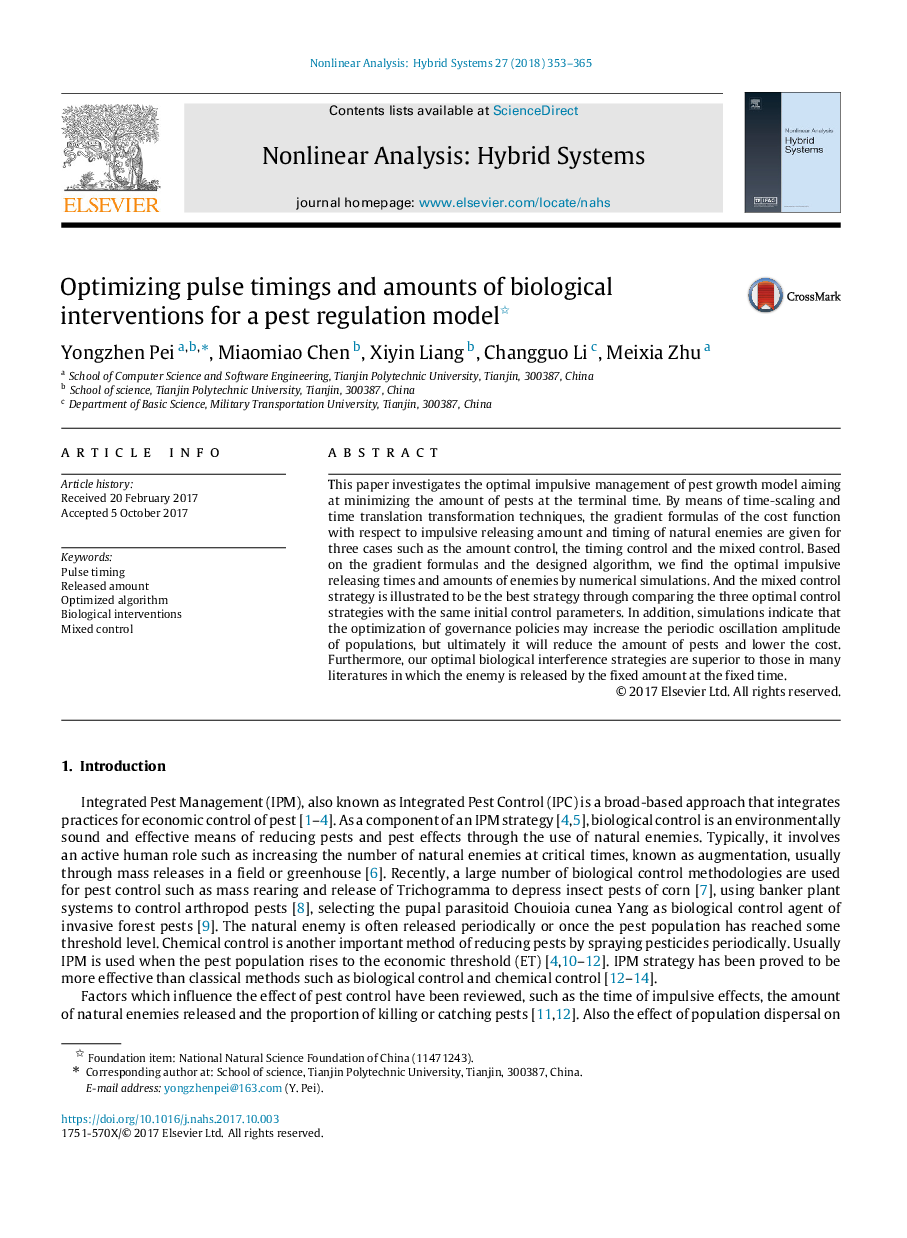| Article ID | Journal | Published Year | Pages | File Type |
|---|---|---|---|---|
| 8055328 | Nonlinear Analysis: Hybrid Systems | 2018 | 13 Pages |
Abstract
This paper investigates the optimal impulsive management of pest growth model aiming at minimizing the amount of pests at the terminal time. By means of time-scaling and time translation transformation techniques, the gradient formulas of the cost function with respect to impulsive releasing amount and timing of natural enemies are given for three cases such as the amount control, the timing control and the mixed control. Based on the gradient formulas and the designed algorithm, we find the optimal impulsive releasing times and amounts of enemies by numerical simulations. And the mixed control strategy is illustrated to be the best strategy through comparing the three optimal control strategies with the same initial control parameters. In addition, simulations indicate that the optimization of governance policies may increase the periodic oscillation amplitude of populations, but ultimately it will reduce the amount of pests and lower the cost. Furthermore, our optimal biological interference strategies are superior to those in many literatures in which the enemy is released by the fixed amount at the fixed time.
Keywords
Related Topics
Physical Sciences and Engineering
Engineering
Control and Systems Engineering
Authors
Yongzhen Pei, Miaomiao Chen, Xiyin Liang, Changguo Li, Meixia Zhu,
